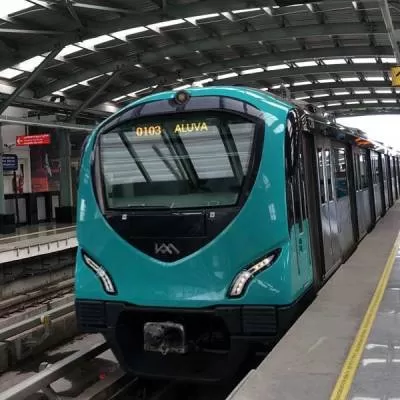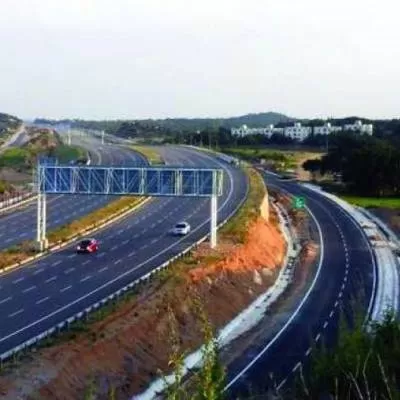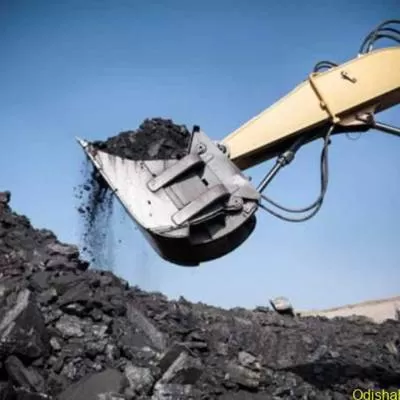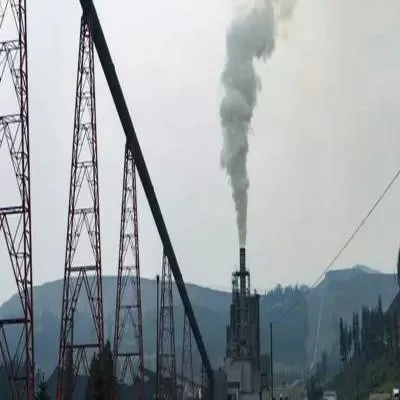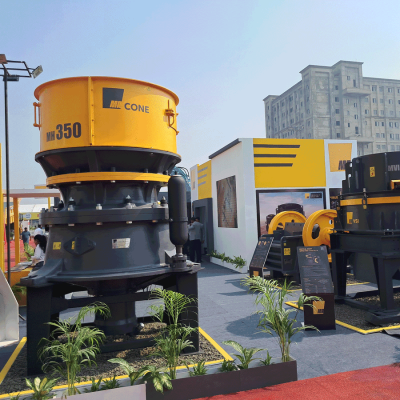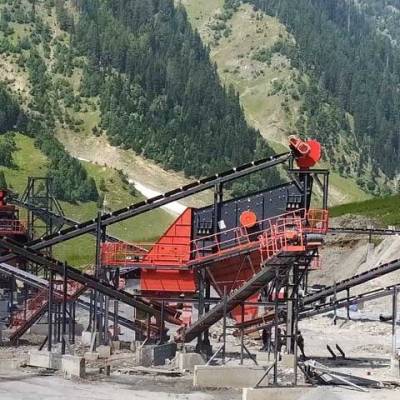- Home
- Infrastructure Energy
- COAL & MINING
- Unmined growth
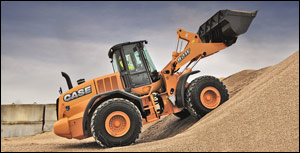
Unmined growth
India currently produces nearly 89 minerals under different groups such as fuel minerals, metallic minerals, non-metallic minerals, atomic minerals and minor minerals. Now consider 2.5 per cent of India’s GDP with a negative bias for FY2013-14. While the country is endowed with huge resources of these minerals, what went wrong!
The current scenario for mining in India is muted. Anjani K Agrawal, Partner & Sector Leader (Mining & Metals), Ernst & Young LLP, says, “Regulatory headwinds for new projects, particularly greenfield, the slowdown in the Indian economy leading to subdued demand growth and to an extent bottlenecks in rail network are key challenges being faced by the sector.” To this, Anil Bhatia, Director Sales and Marketing, Case New Holland Construction Equipment (I) Pvt Ltd, (Case India), adds, “Weak regulatory mechanisms, corruption and government oversight have turned the scenario of the mining industry in India into turmoil. Also, Indian iron ore exports have been hurt in the last few years due to mining bans in Goa and Karnataka.” Iron ore production, after facing a significant drop in FY2013 has started to see some recovery. “However, recent events in Odisha may cap this rebound,” observes Agrawal. While coal production is expected to be marginally higher than the previous two years, he is certain that the supply will continue to lag behind the demand primarily from the power sector.
This slow growth has adversely affected the mining equipment sector as well. “Deferment in private projects and slow pace of infrastructural investments have been among the key reasons hurting construction equipment volumes while a curb on mining in several geographies has impacted the demand for mining equipment,” affirms Bhatia.
Green shoots
Today it is known that some things cannot be delayed further. According to Dipankar Banerjee, COO, Tractors India Pvt Ltd, “Major projects stuck due to land acquisition issues need to see the light of day. Also, the state government’s willingness to support the mine authority or owner is crucial.” This said, among the few coal mines to be operational this year, the Eastern Coalfield Rajmahal project, operated by a private contractor, expects to commence operations from March onwards. Although the current scenario is not very encouraging, experts suggest that the existing mines, which are operating at present with all clearances, should increase productivity.
Also, as Agrawal observes, “Incremental iron ore production will largely be from re-opening of mines in Karnataka and Goa.” The lifting of the ban imposed on the iron ore mines by the Supreme Court in pockets of Karnataka has brought some cheer to the mining and construction equipment sector. Banerjee foresees such positive movement in the sector resulting in actual equipment delivery to mining companies. However, Agrawal adds, “Demand for mining equipment from the coal sector will be contingent upon the success of Coal India in bringing new mines on-stream and the coal block allocation issues are resolved soon thereby triggering demand from the private sector.”
Gujarat Mineral Development Corporation (GMDC) plans to open new mines. AL Thakor, General Manager (Planning, Research and Development), GMDC, discloses, “In the next two to three months, a mine with 1 million tonne per annum capacity is expected to open in Umarsar in Kutch.” But for its future mines, GMDC is going by the concept of outsourcing mining operations. Hence, the private companies involved will buy the required equipment.
Hindustan Copper also has plans to expand its existing mines by outsourcing most of its activities. The company is operating underground mines in Ketri in Rajasthan and its copper mine in Malanjkhand (Madhya Pradesh) is the biggest open pit mine in India. The company now plans to go underground. As revealed by a source, “At present, Hindustan Copper is producing 3.6 million tonne per annum and will expand to 12.4 million tonne per annum in the next five to six years. This is in the pipeline.” The company plans to increase its capacity of dumpers and excavators, to be sourced from Indian companies, for the Malanjkhand mine. And for its underground operations in Khetri, Hindustan Copper will opt for large capacity loading and unloading equipment along with increasing its drilling capacity.
What lies ahead!
There are opportunities for mining equipment players. Even for open cast mining, companies are increasing capacity. Some are expanding underground activities as these do not involve land acquisition or forest clearance. In the eastern part of India, there are nine underground mining projects on the anvil. Also, given the growing trends in power demand and per capita consumption of metals in the medium-long term, Agrawal sees sizeable opportunities for mining and suppliers. According to Bhatia, the competitive edge lies in satisfying customers by delivering higher quality products that offer value for money.
Case offers 821F and 721F series Wheel Loader and 865 B Motor Grader in the mining segment. He adds, “We designed the B Series motor grader line with proven technology to provide superior operator control, visibility and comfort.” While, Bhatia expects mining equipment demand to consequently grow from about $430 million in FY12 to about $600 million by FY17, Banerjee is convinced that India will become a mining equipment manufacturing leader in the world in time to come.
At the policy level
As things stand today, the Indian mining sector is expected to be driven by government policies in 2014. Agrawal predicts, “We expect status quo in the run up to the General Elections of 2014 and hope to get the MMDRA to move forward thereafter.” According to him, matters to watch will include resolution of coal blocks, new production caps emerging from environment perspectives, and Odisha and Goa markets for iron ore.
As the long-term demand for steel, other metals and energy in India is intact, demand growth for minerals is assured. The state governments have started getting ambitious in revenue generation from the sector. Agrawal is certain that if these headwinds abate, mining in India can gradually ramp up. On the other hand, if the policy challenges remain and no clear direction is provided, India may have to increasingly resort to imports to meet its domestic demand. That will be a huge loss of opportunity.
10 Mining Trends for 2014
- The cost of contraction: To reduce costs sustainably, miners must improve their overall productivity, strengthen their management and reporting systems, use analytics to uncover their underlying cost drivers, and rationalise their supply chains.
- Matching supply to demand: As long-term demand indicators remain robust, rather than mothballing projects, miners should find ways to weather current supply or demand imbalances.
- The remaking of mining: Miners should innovate by adopting technologies to enable mine design and planning, energy supply, as well as adoption of emerging technologies.
- Finding funding: Although major diversified companies responded by issuing bonds, juniors have been hard hit. This may represent an acquisition opportunity for mining companies with large cash holdings.
- The project pipeline stutters: Investment in marginal projects has led to record asset impairments. To turn the tide, miners need more robust project scoping processes, governance systems and risk control mechanisms.
- Power to the people: Miners should take a nuanced approach to stakeholder relations, including developing local supply bases, improving communications, sharing infrastructure among various economic clusters and sourcing local labor.
- Resource nationalism spreads: Miners should open a dialogue by forming policy development lobbies, coordinate local infrastructure projects, engage citizens, and negotiate with all levels of government.
- Crackdown on corruption: To improve compliance, mining companies should adopt appropriate internal controls and policies, engage in compliance audits and risk assessments, and upgrade their systems to support sufficient reporting detail.
- Changing the safety equation: Companies should model high-risk events, re-examine their workplace practices, and break down the data silos that prevent them from accurately identifying safety incident patterns.
- A dearth of skills: Miners should standardise systems, embrace new training environments, and take the steps necessary to attract both skilled management and sector-savvy directors.
To share your views on opportunities in the mining sector, write in at feedback@ASAPPmedia.com
SHRIYAL SETHUMADHAVAN delves into the growing opportunities in the mining sector that will pave the way for mining equipment in the months to come.India currently produces nearly 89 minerals under different groups such as fuel minerals, metallic minerals, non-metallic minerals, atomic minerals and minor minerals. Now consider 2.5 per cent of India’s GDP with a negative bias for FY2013-14. While the country is endowed with huge resources of these minerals, what went wrong!The current scenario for mining in India is muted. Anjani K Agrawal, Partner & Sector Leader (Mining & Metals), Ernst & Young LLP, says, “Regulatory headwinds for new projects, particularly greenfield, the slowdown in the Indian economy leading to subdued demand growth and to an extent bottlenecks in rail network are key challenges being faced by the sector.” To this, Anil Bhatia, Director Sales and Marketing, Case New Holland Construction Equipment (I) Pvt Ltd, (Case India), adds, “Weak regulatory mechanisms, corruption and government oversight have turned the scenario of the mining industry in India into turmoil. Also, Indian iron ore exports have been hurt in the last few years due to mining bans in Goa and Karnataka.” Iron ore production, after facing a significant drop in FY2013 has started to see some recovery. “However, recent events in Odisha may cap this rebound,” observes Agrawal. While coal production is expected to be marginally higher than the previous two years, he is certain that the supply will continue to lag behind the demand primarily from the power sector.This slow growth has adversely affected the mining equipment sector as well. “Deferment in private projects and slow pace of infrastructural investments have been among the key reasons hurting construction equipment volumes while a curb on mining in several geographies has impacted the demand for mining equipment,” affirms Bhatia.Green shootsToday it is known that some things cannot be delayed further. According to Dipankar Banerjee, COO, Tractors India Pvt Ltd, “Major projects stuck due to land acquisition issues need to see the light of day. Also, the state government’s willingness to support the mine authority or owner is crucial.” This said, among the few coal mines to be operational this year, the Eastern Coalfield Rajmahal project, operated by a private contractor, expects to commence operations from March onwards. Although the current scenario is not very encouraging, experts suggest that the existing mines, which are operating at present with all clearances, should increase productivity.Also, as Agrawal observes, “Incremental iron ore production will largely be from re-opening of mines in Karnataka and Goa.” The lifting of the ban imposed on the iron ore mines by the Supreme Court in pockets of Karnataka has brought some cheer to the mining and construction equipment sector. Banerjee foresees such positive movement in the sector resulting in actual equipment delivery to mining companies. However, Agrawal adds, “Demand for mining equipment from the coal sector will be contingent upon the success of Coal India in bringing new mines on-stream and the coal block allocation issues are resolved soon thereby triggering demand from the private sector.”Gujarat Mineral Development Corporation (GMDC) plans to open new mines. AL Thakor, General Manager (Planning, Research and Development), GMDC, discloses, “In the next two to three months, a mine with 1 million tonne per annum capacity is expected to open in Umarsar in Kutch.” But for its future mines, GMDC is going by the concept of outsourcing mining operations. Hence, the private companies involved will buy the required equipment.Hindustan Copper also has plans to expand its existing mines by outsourcing most of its activities. The company is operating underground mines in Ketri in Rajasthan and its copper mine in Malanjkhand (Madhya Pradesh) is the biggest open pit mine in India. The company now plans to go underground. As revealed by a source, “At present, Hindustan Copper is producing 3.6 million tonne per annum and will expand to 12.4 million tonne per annum in the next five to six years. This is in the pipeline.” The company plans to increase its capacity of dumpers and excavators, to be sourced from Indian companies, for the Malanjkhand mine. And for its underground operations in Khetri, Hindustan Copper will opt for large capacity loading and unloading equipment along with increasing its drilling capacity.What lies ahead!There are opportunities for mining equipment players. Even for open cast mining, companies are increasing capacity. Some are expanding underground activities as these do not involve land acquisition or forest clearance. In the eastern part of India, there are nine underground mining projects on the anvil. Also, given the growing trends in power demand and per capita consumption of metals in the medium-long term, Agrawal sees sizeable opportunities for mining and suppliers. According to Bhatia, the competitive edge lies in satisfying customers by delivering higher quality products that offer value for money.Case offers 821F and 721F series Wheel Loader and 865 B Motor Grader in the mining segment. He adds, “We designed the B Series motor grader line with proven technology to provide superior operator control, visibility and comfort.” While, Bhatia expects mining equipment demand to consequently grow from about $430 million in FY12 to about $600 million by FY17, Banerjee is convinced that India will become a mining equipment manufacturing leader in the world in time to come.At the policy levelAs things stand today, the Indian mining sector is expected to be driven by government policies in 2014. Agrawal predicts, “We expect status quo in the run up to the General Elections of 2014 and hope to get the MMDRA to move forward thereafter.” According to him, matters to watch will include resolution of coal blocks, new production caps emerging from environment perspectives, and Odisha and Goa markets for iron ore.As the long-term demand for steel, other metals and energy in India is intact, demand growth for minerals is assured. The state governments have started getting ambitious in revenue generation from the sector. Agrawal is certain that if these headwinds abate, mining in India can gradually ramp up. On the other hand, if the policy challenges remain and no clear direction is provided, India may have to increasingly resort to imports to meet its domestic demand. That will be a huge loss of opportunity.10 Mining Trends for 2014The cost of contraction: To reduce costs sustainably, miners must improve their overall productivity, strengthen their management and reporting systems, use analytics to uncover their underlying cost drivers, and rationalise their supply chains.Matching supply to demand: As long-term demand indicators remain robust, rather than mothballing projects, miners should find ways to weather current supply or demand imbalances.The remaking of mining: Miners should innovate by adopting technologies to enable mine design and planning, energy supply, as well as adoption of emerging technologies. Finding funding: Although major diversified companies responded by issuing bonds, juniors have been hard hit. This may represent an acquisition opportunity for mining companies with large cash holdings.The project pipeline stutters: Investment in marginal projects has led to record asset impairments. To turn the tide, miners need more robust project scoping processes, governance systems and risk control mechanisms.Power to the people: Miners should take a nuanced approach to stakeholder relations, including developing local supply bases, improving communications, sharing infrastructure among various economic clusters and sourcing local labor.Resource nationalism spreads: Miners should open a dialogue by forming policy development lobbies, coordinate local infrastructure projects, engage citizens, and negotiate with all levels of government.Crackdown on corruption: To improve compliance, mining companies should adopt appropriate internal controls and policies, engage in compliance audits and risk assessments, and upgrade their systems to support sufficient reporting detail.Changing the safety equation: Companies should model high-risk events, re-examine their workplace practices, and break down the data silos that prevent them from accurately identifying safety incident patterns.A dearth of skills: Miners should standardise systems, embrace new training environments, and take the steps necessary to attract both skilled management and sector-savvy directors.Source: Deloitte Touche Tohmatsu India Pvt LtdTo share your views on opportunities in the mining sector, write in at feedback@ASAPPmedia.com


